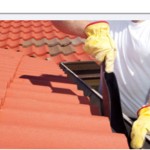If you’ve ever assembled anything, you know the problem with fasteners. They’re small, hard to hold on to, hard to properly align and usually end up hitting the floor at least three times before they actually fasten anything, assuming they don’t just roll away and end up getting lost forever. One possible answer to this age-old problem is the captive fastener, available from Matdan Fasteners. There are many types of captive fastener, each with it’s own specific applications that it’s suited for, and each can be used to make a variety of useful products.
About Captive Fasteners
These fasteners are designed to stay connected to the piece being assembled, making the typical fastener problems unlikely, or even impossible. Under normal circumstances, the fasteners won’t come out, so they can’t be lost. Since they are already in one piece, you don’t have to do the balancing act normally required to line up two pieces of material and a fastener. In most cases, you need only to get the two pieces close to lined up and start turning the fastener while it is conveniently stuck in place. This is especially handy when dealing with bulky pieces, smaller pieces or items that need to be assembled in tight spaces with bad angles of access.
Types
Captive fasteners come in many different shapes and sizes, depending on their application. The head of a fastener like this might be a traditional slotted-head screw, a bolt, or a ridged knob for easy turning without tools. The fasteners can be flush-mounted or left sticking out. They can be made from heat-treated steel, aluminum, nylon or other traditional fastener materials. Matdan Fasteners carries the most useful variations, including low-profile versions for installations where space is limited, miniature versions for areas that require a smaller footprint, and snap-in fasteners for quick installation, among others.
Uses for Captive Fasteners
Captive screws and other fasteners of this type are perfect for assembly line production pieces, since they won’t fall out and clog machinery and they require no precision alignment. This is one reason why they are often used in making mass produced items like furniture, vehicles and computer cases. You can also often find them in doors, frames and panels.








